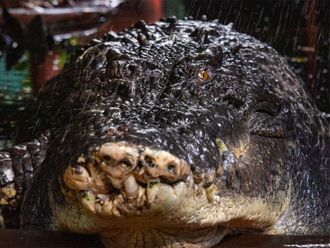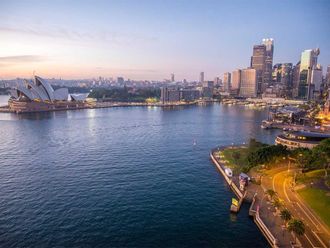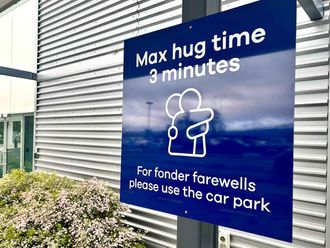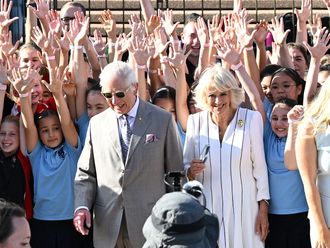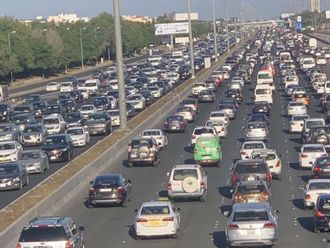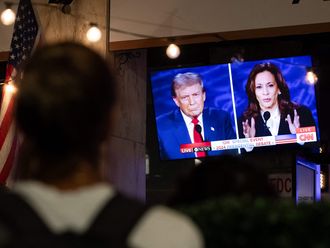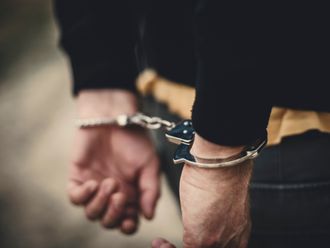The Hague, Netherlands: The UN's highest court yesterday ordered both Thailand and Cambodia to immediately withdraw military forces from disputed areas around a World Heritage temple straddling their border.
The court drew a "provisional demilitarised zone" around the 1,000-year-old Preah Vihear temple that would push Thai troops back from positions they have long occupied and would see Cambodian armed forces leave the temple's immediate vicinity.
At least 20 people have died since 2008 in clashes between the two countries that continued as late as last April, when military commanders agreed to an oral cease-fire.
By a vote of 11-5, the judges of the International Court of Justice went beyond Cambodia's request to order Thai troops out of the area, and imposed restrictions on both armies and police forces.
It said it decided to intercede to avoid the risk of more clashes and further damage to the ancient Hindu shrine.
It also called on the two nations to allow officers from the Association of Southeast Asian Nations into the area to observe the cease-fire, which was called for by the UN Security Council last February.
Satisfied with decision
Both sides said they were satisfied with the decision.
Thai Foreign Minister Kasit Piromya noted the court had declined Cambodia's demand for a unilateral Thai pullback. A withdrawal of armed Cambodians from the temple complex "has been our consistent position", he said outside the courtroom.
He said the decision is binding on both countries, and Thailand would abide by the ruling to withdraw forces and facilitate the observers' deployment.
Thailand also agreed to the court's instruction to allow unhindered supplies to Cambodian civilian personnel at the temple complex, he said. Cambodian Foreign Minister Hor Namhong said the establishment of a demilitarised zone would mean "a permanent cease-fire. This is tantamount to a cessation of aggression" by Thailand.
He also voiced satisfaction with the dispatch of truce observers, which he said Cambodia had been seeking since last February.
In brief remarks to reporters, he made no reference to the demand for Cambodian troops to abandon the temple grounds.
The court ruled in 1962 that Preah Vihear is in Cambodian territory, a judgment Thailand does not dispute.
No definitive boundaries
But the earlier ruling failed to draw definitive boundaries. Cambodia went to the UN tribunal for clarifications on "the meaning and scope" of the ruling. Thailand argued the court has no need to take further action.
The court said its ruling would not prejudice any final ruling on where the border should fall. It could take the court many months or even years to reach that decision.
Fighting since 2008, when the shrine to the Hindu god Shiva was declared a World Heritage site, has driven tens of thousands of people from the area and wounded dozens, in addition to the score who have been killed.
A map of the demilitarised zone proscribed an area of several square kilometres, with Thai troops moving off a ridge line north of the temple and Cambodian forces moving across a deep valley south of the shrine.
Supplies to the temple would have to come via a road that Thailand claims runs through its territory.
Older than Angkor Wat
Following are facts about the 900-year-old Preah Vihear temple:
- Completed in the 11th century, Preah Vihear predates Cambodia's more famous Angkor Wat temple complex by 100 years.
- Officially part of Cambodia since a 1962 World Court ruling, Preah Vihear, or Khao Phra Viharn as the Thais call it, has only really been accessible from Thailand in recent years. From Cambodia, landmines and Khmer Rouge guerrillas kept it off-limits for decades.
- Thailand has officially accepted the ruling on the temple but the land around it is still claimed by both countries and the temple itself has stirred nationalist passions on both sides for generations. Cambodia's bid to list it as a World Heritage Site fuelled the tension.
- At least three Thais and eight Cambodians died in fighting at the temple from February 4 Preah Vihear has witnessed bloodshed before. The Khmer Rouge occupied the site for years, and rusting artillery pieces can still be found lying amid the ruins.


